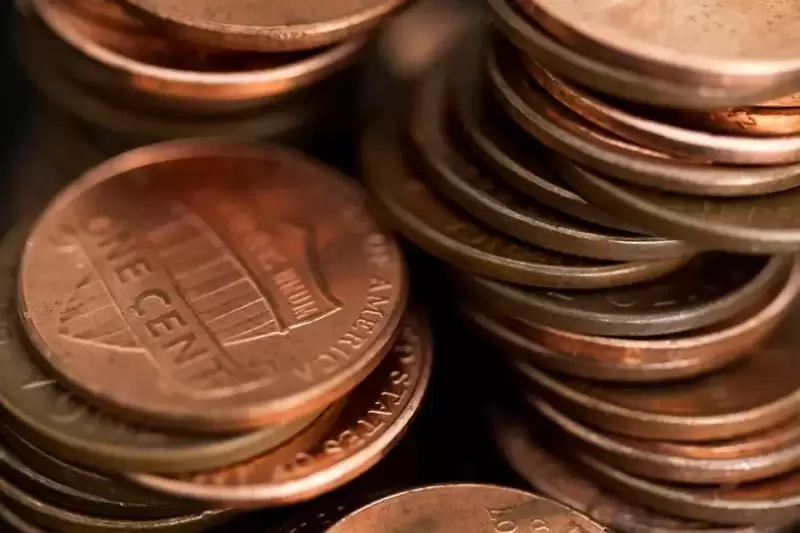 |
|
 |
|
 |
|
 |
|
 |
|
 |
|
 |
|
 |
|
 |
|
 |
|
 |
|
 |
|
 |
|
 |
|
 |
|

A hoard of over 321 mint-condition silver coins has been discovered near the construction site of Sizewell C, a future nuclear power station in Suffolk on England’s eastern coast.
The find, made by archaeologists from Oxford Cotswold Archaeology (OCA), offers fresh insight into the political and social turbulence of 11th-century England. The coins, carefully wrapped in cloth and lead, date back to the reigns of Harold I, Harthacnut, and Edward the Confessor, minted between 1036 and 1044. Unearthed during routine excavations, the bundle—affectionately nicknamed “the Pasty” by archaeologists due to its shape—was likely buried by a local figure seeking to safeguard their wealth amidst the uncertainty surrounding Edward the Confessor’s accession to the throne in 1042.
A Glimpse into a Turbulent Past
The mid-11th century was a time of significant upheaval in England, marked by the transition from Danish to Anglo-Saxon rule. Edward’s coronation restored the House of Wessex to the throne after decades of Danish control under King Cnut and his sons. The regime change brought uncertainty, with some wealthier individuals facing exile or property confiscation.
Experts believe the coin hoard belonged to an individual of middling status, possibly a person of local influence. According to Oxford Cotswold Archaeology, the hoard’s value at the time was equivalent to a small herd of cows—a significant sum for most people but not indicative of high nobility.
“The Pasty was a true privilege to find,” said Andrew Pegg, the archaeologist who uncovered the hoard. “A perfect archaeological time capsule. The information we are learning from it is stunning, and I’m so proud to have added to the history of my own little part of Suffolk.”
The coins, minted in locations including London, Norwich, Ipswich, and even smaller towns like Langport and Axbridge, showcase the economic networks of the time.
The Mystery of the Buried Treasure
A post shared by Cotswold Archaeology (@cotswoldarch)
While the exact reasons for burying the hoard remain unknown, it is likely the owner intended to retrieve it later but was prevented by unforeseen circumstances. They may have died, been unable to relocate the exact spot, or faced other obstacles that left the treasure hidden for nearly a millennium.
Alexander Bliss, Coin Specialist at OCA, remarked, “This new coin hoard provides us with valuable insight into the rich historical backdrop of this period, adding to the evidence that Edward the Confessor’s accession was marked by a degree of uncertainty and concern within wider society.”
Archaeology at Sizewell C
The discovery is part of a broader archaeological programme linked to the construction of Sizewell C. In addition to the coin hoard, excavations have unearthed artefacts spanning centuries, including World War Two relics that highlight Suffolk’s strategic importance.
Sizewell C’s Site Delivery Director, Damian Leydon, commented, “The discovery of the 11th-century coin hoard is an extraordinary find. Archaeology is an important step in the Sizewell C project, helping us understand what lies beneath the ground before construction begins. This project provides a rare and fascinating glimpse into Suffolk’s rich history, deepening our understanding of this part of Britain.”
Top Image: Photo courtesy Sizewell C
免责声明:info@kdj.com
所提供的信息并非交易建议。根据本文提供的信息进行的任何投资,kdj.com不承担任何责任。加密货币具有高波动性,强烈建议您深入研究后,谨慎投资!
如您认为本网站上使用的内容侵犯了您的版权,请立即联系我们(info@kdj.com),我们将及时删除。
-

- 在解放日关税公告后,DXY再次下降。
- 2025-04-03 13:50:12
- 澳元大,大,然后做得很少。铅靴今天将很有趣。黄金到月球。油顶。
-

-

-

-

- 由于造成的错误,一群林肯便士价值数千美元。
- 2025-04-03 13:40:12
- 今天,硬币的一些极少数变化可能正在流通,找到一个可以带给您大笔钱。
-

-

- 瓜达钱包评论:最好的比特币钱包和总体最好的加密钱包
- 2025-04-03 13:35:13
- 如果您想变得环保,您需要做很多事情。如果您使用加密货币,这将变得更加困难。
-

- 与大多数XRP持有人不同
- 2025-04-03 13:35:13
- PALADININGING CLOUD采矿服务提供商在人群中脱颖而出,成为XRP投资者的最佳选择。
-

- 加密交易所Kraken已在加拿大注册为受限制的经销商
- 2025-04-03 13:30:12
- 该注册于周二宣布,是在需要交流的多年过程之后,以符合更高的投资者保护和治理标准。




























































